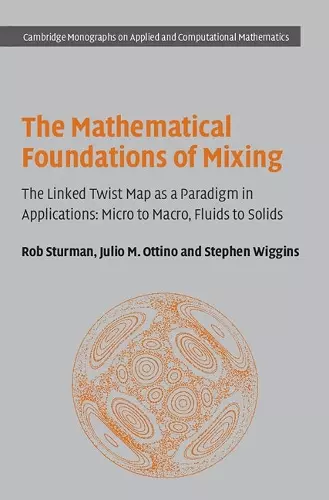The Mathematical Foundations of Mixing
The Linked Twist Map as a Paradigm in Applications: Micro to Macro, Fluids to Solids
Stephen Wiggins author Rob Sturman author Julio M Ottino author
Format:Hardback
Publisher:Cambridge University Press
Published:21st Sep '06
Currently unavailable, and unfortunately no date known when it will be back

A unifying framework for understanding many types of fluid mixing, for researchers.
Linked Twist Maps can provide a unifying framework for understanding many types of fluid mixing, ranging from the very small to the very large, from fluids to solids. The authors discuss the definition and construction of LTMs, provide examples of specific mixers, and present a number of open problems.Mixing processes occur in many technological and natural applications, with length and time scales ranging from the very small to the very large. The diversity of problems can give rise to a diversity of approaches. Are there concepts that are central to all of them? Are there tools that allow for prediction and quantification? The authors show how a variety of flows in very different settings possess the characteristic of streamline crossing. This notion can be placed on firm mathematical footing via Linked Twist Maps (LTMs), which is the central organizing principle of this book. The authors discuss the definition and construction of LTMs, provide examples of specific mixers that can be analyzed in the LTM framework and introduce a number of mathematical techniques which are then brought to bear on the problem of fluid mixing. In a final chapter, they present a number of open problems and new directions.
"The material is presented in a style that should make it accessible to a wise audience, and especially to readers involved in practical aspects of mixing who wish to learn more about the mathematical problems underlying the physical phemonology." Mathematical Reviews
ISBN: 9780521868136
Dimensions: 233mm x 158mm x 18mm
Weight: 620g
302 pages